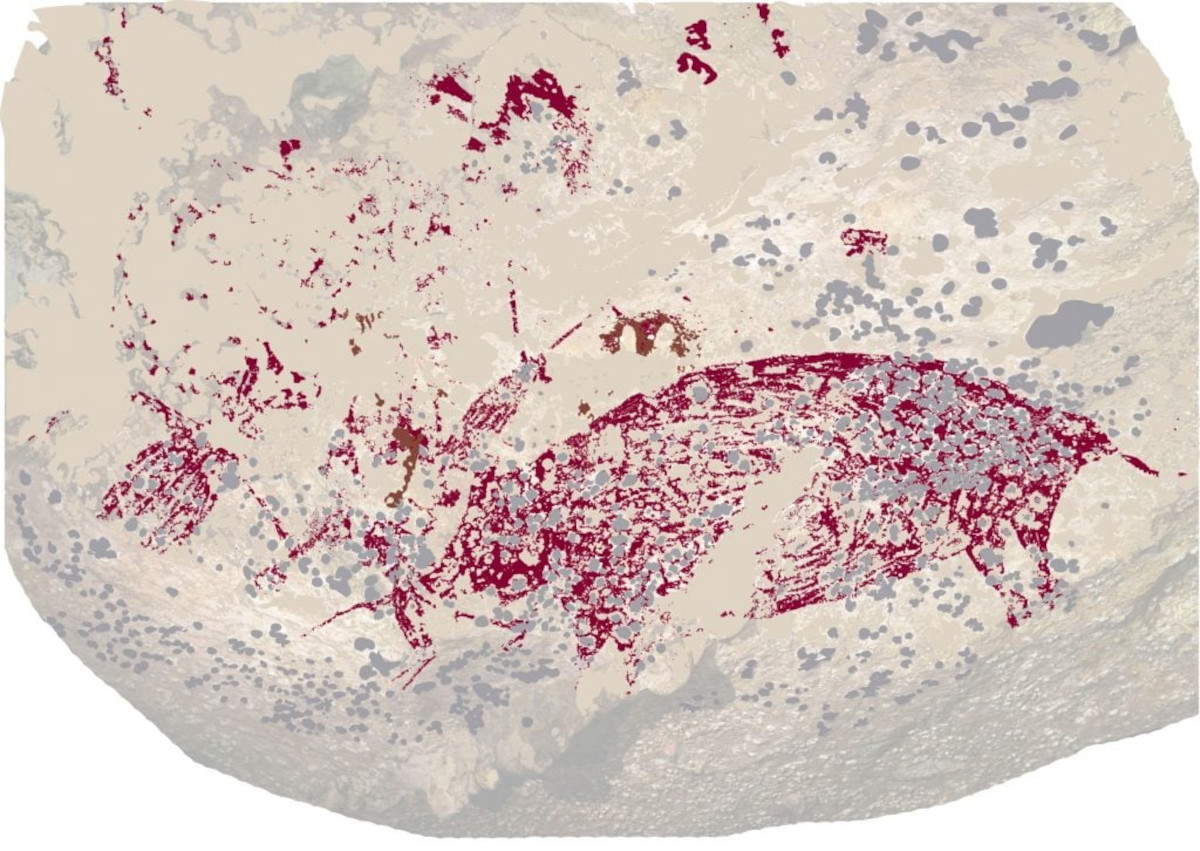The oldest figurative rock artwork dates back more than 51,000 years: discovered in Indonesia
Discovered in a limestone cave on the Indonesian island of Sulawesi is the oldest known work of figurative rock art to date. The discovery was made a few years ago and had originally been dated, using a different approach, to a minimum of 43,900 thousand years ago; now, from investigations carried out using advanced methods, it appears, according to the study published in Nature, that this dates instead to more than 51 thousand years ago. The work depicts a wild boar being hunted by three human figures, one of whom holds his arms wide open, while another points a stick toward the animal’s neck.
The researchers, led by archaeologist Adhi Agus Oktaviana of the Indonesian National Research and Innovation Agency (BRIN) in Jakarta, used the “laser ablation uranium-series” (LA-U-series), an innovative and sophisticated method that analyzes small layers of calcium carbonate that have formed on top of the work to determine its age, for the investigation. The result is that the work is at least 51,200 years old.
“Our results are very surprising: none of the famous European works of art from the Ice Age are remotely as old as this one, with the exception of some controversial finds in Spain,” said Adhi Agus Oktaviana. “Humans have probably been telling stories for much longer than 51,200 years, but because words do not fossilize, we can only rely on indirect proxies such as depictions of scenes in art, and Sulawesi art is now by far the oldest such evidence known to archaeology.”
“The innovative technique we pioneered allows us to create detailed maps of calcium carbonate layers,” said Professor Joannes-Boyau of Southern Cross University. “This capability allows us to identify and avoid regions affected by natural diagenesis processes, which result from intricate growth histories. As a result, our age determinations for rock art become more robust and reliable.”
The new dating of the rock artwork found on the island of Sulawesi challenges two fundamental assumptions in the study of Pleistocene art, both of which are based on the rich documentation of art production in Upper Paleolithic Europe: first, that the depiction of anthropomorphs or human-like figures did not become relatively common until the end of the late Pleistocene, and second, that the creation of overt narrative compositions was generally rare or absent in early rock art.
Based on dating work, it now appears that depictions of anthropomorphic figures interacting with animals appear in late Pleistocene rock art in Sulawesi at a frequency not found elsewhere until tens of millennia later in Europe. This implies that a broad culture of storytelling developed at an early period in the long history of Homo Sapiens in this region, particularly the use of stage representation to tell visual stories about human-animal relationships.
Photo: Griffith University
 |
| The oldest figurative rock artwork dates back more than 51,000 years: discovered in Indonesia |
Warning: the translation into English of the original Italian article was created using automatic tools. We undertake to review all articles, but we do not guarantee the total absence of inaccuracies in the translation due to the program. You can find the original by clicking on the ITA button. If you find any mistake,please contact us.




























